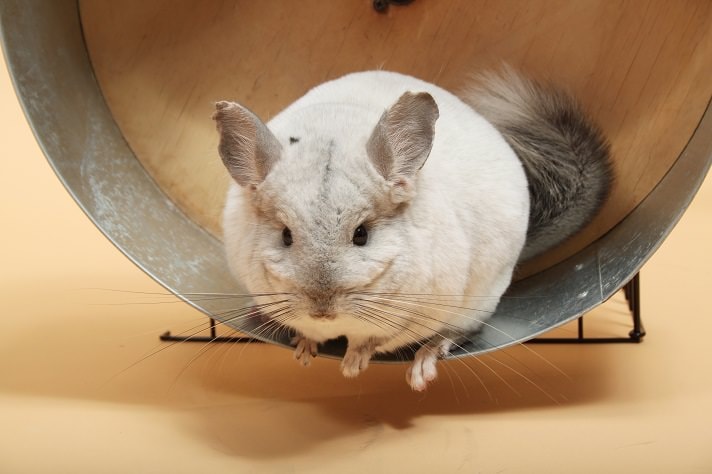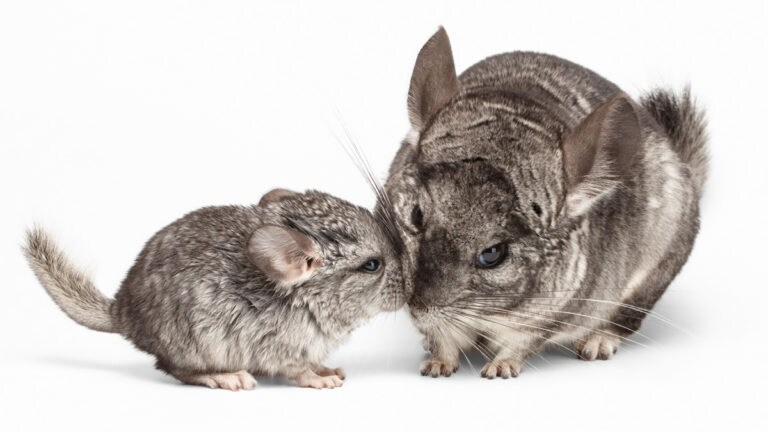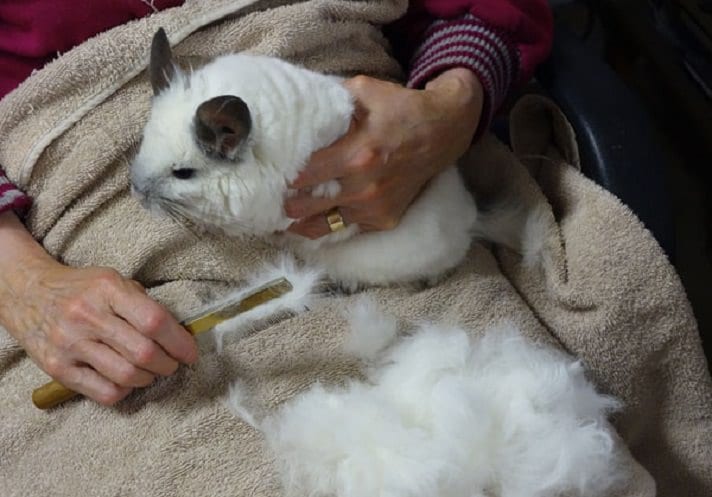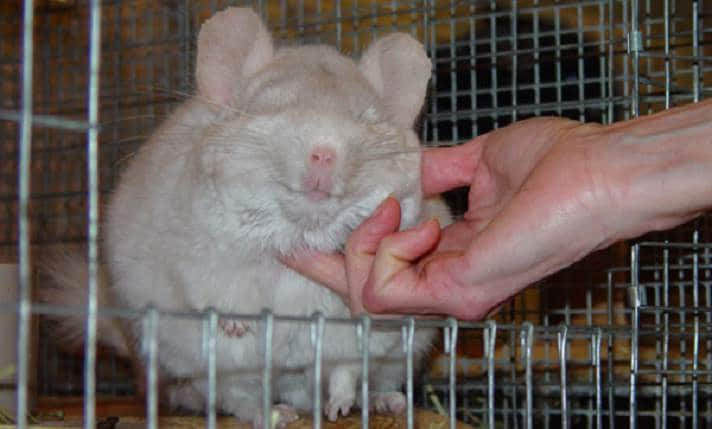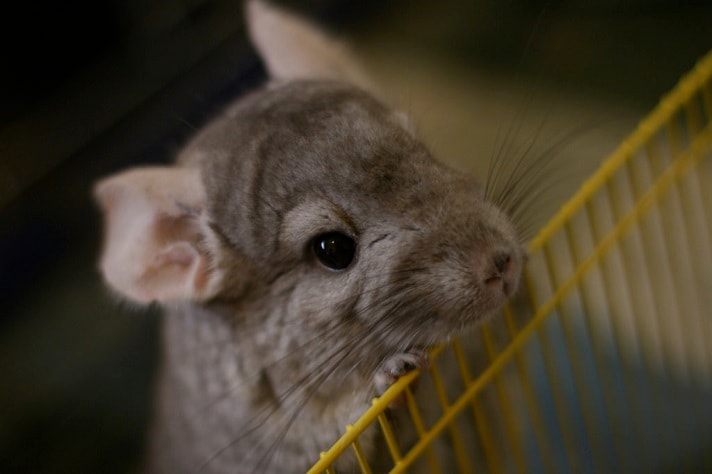The key to continuing good health is observing your pet. Healthy chinchillas have bright eyes, fresh breath, alert expressions, high energy and good appetites. Fur is smooth, shiny and plentiful. They are agile, move expertly around the cage and rush enthusiastically to the cage door at feeding time. Changes in the droppings are often the first sigh of a problem developing. Monitor your chin’s droppings every day. Healthy chinchillas produce droppings that are moist, firm, evenly colored dark brown and from ¼ to ½ inch long.
Watch for the following three warning signs:
- If droppings start getting significantly smaller, drier or lighter in color, a digestive tract problem may be developing. This can be caused by an infection, a hairball, a sudden dietary change or a blockage from ingesting materials such as rubber or plastic.
- Diarrhea, caused by spoiled water, an intestinal infection or a change in diet.
- Food barely eaten.
- Give the chinchilla an inexhaustible supply of fresh timothy hay.
- Feed your chin yogurt with live cultures on a popsicle stick. Lactobacillus is the active ingredient in live-culture yogurt. It is a beneficial supplement with no side effects or risk of overdose. Lactobacillus is also available in freeze-dried powder form at most health food stores. Alice Kline, a pioneer in chinchilla breeding, devoted one full chapter in her book to the attributes and benefits of the naturally occurring intestinal bacteria, Lactobacillus acidophilus. It helps promote proper digestion, produces many vitamins and releases a natural antibiotic that controls many disease-causing organisms.
- For many years, chinchilla owners have been giving their pet vitamin C to enhance immune system integrity, resistance to disease and general health. Most use chewable vitamin C tablets (a quarter of a 500 milligram chewable tablet two to three times per week). Vitamin C is also a natural laxative. If your chin starts to produce smaller, drier, light tan droppings, additional vitamin C often helps return digestion to normal. It will also help clear hairballs and other obstructions. With most aspects of chinchilla health, prevention is more effective than fighting disease after it sets in. We give our chinchillas both Lactobacillus and vitamin C three times weekly as a preventative.
Chinchillas may not exhibit noticeable signs of illness until they are very sick. A sick chinchilla will lost interest in food, look dull/depressed, be lethargic and often sit hunched over in a cage corner.
What to Do
If your chinchilla begins to show signs of illness, follow one of these plans.
Plan A:
Wait to see if your chinchilla gets better. This is risky because once a chin begins to show signs of illness the problem may already be irreversible. Veterinarians do their best, but can’t work miracles. Antibiotics may help control an infection but also will destroy much of the normal intestinal flora, thereby limiting digestions and the chin’s natural ability to recover. Death may occur within a couple of days.
Plan B:
Use some simple ideas adopted by chin owners through the years to manage digestive tract function and avoid the development of many serious problems. At the first sign of any change in the droppings:
By: Marty Hull, D.D.S., and Amanda Martin
Featured Image: Via Gina Cioli/Lumina Media
Share:
